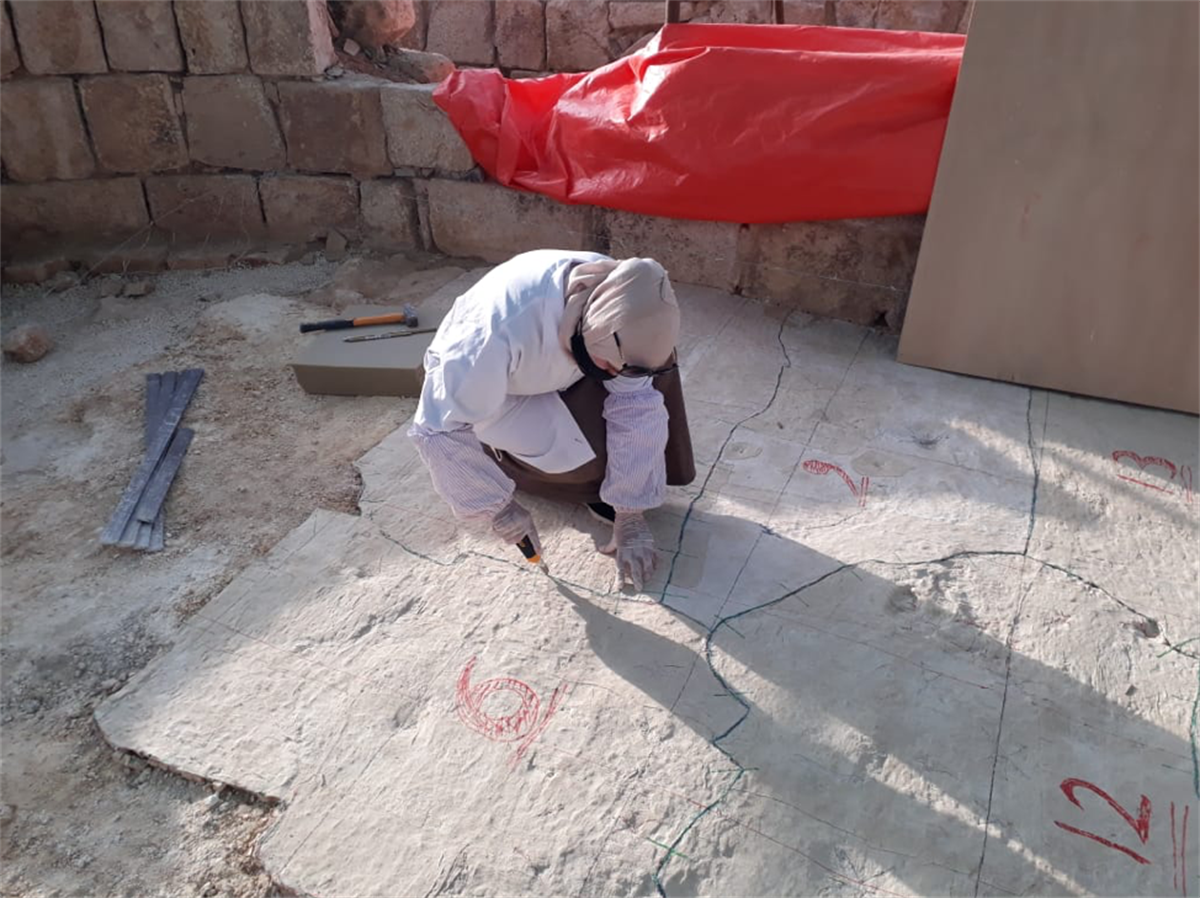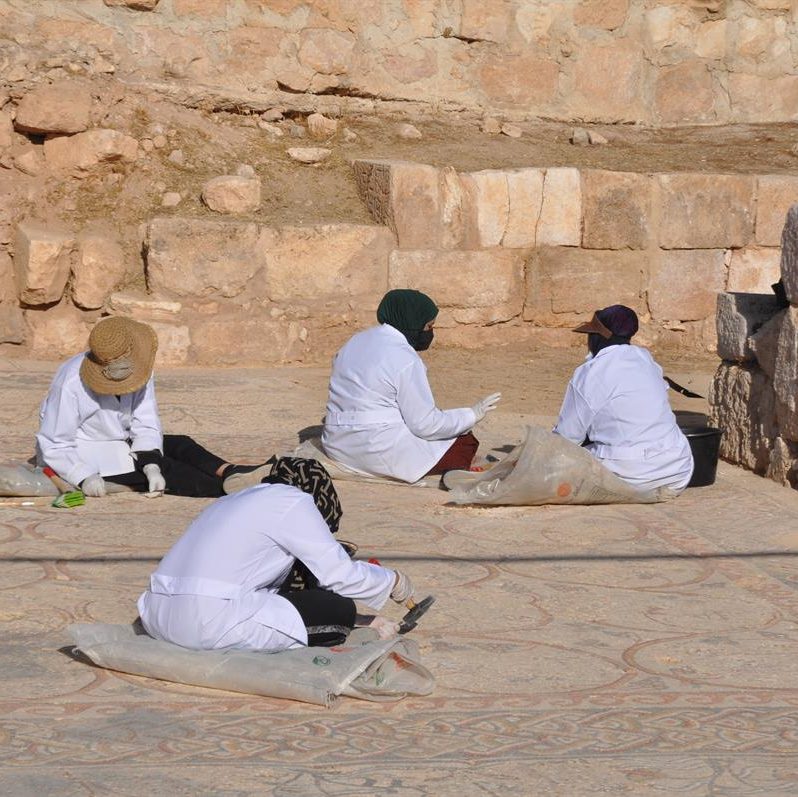Waleed Khaled is a 45-year-old Syrian refugee who lives with his wife and six children in the village of Rihab, around 50 Km north of Amman (Mafraq Governorate). He fled Syria in 2012 where he was studying a Bachelor of Law, abandoning his dream to become a lawyer. He started learning construction as he “thought it was easier to get a job opportunity in that sector” Waleed says.
While developing his skills, he never imagined restoring ancient sites, but: “When I learned about the UNESCO and AVSI cash-for-work project in Rihab for the mosaic conservation I thought… why not?”.
Waleed is one of the 56 workers currently working on one of the three ancient churches at the village of Rihab - St. Mary’s Church, the church complex of St. John the Baptist and Priests Sergius and Procopius - working on basic site maintenance and conservation interventions.

“I like this job as it reminds me of the archeology in my village in Syria. I am grateful because I learned many techniques for the conservation and restoration of mosaics, both in the field and by working on some mosaics coming from the site but stored at the Jordanian Department of Antiquities office in Rihab. I hope that this project will continue as it has a great financial and psychological impact on the Syrian refugees in the region”. His involvement also gave him a sense of community: “Contributing to turning Rihab into a tourist attraction is like giving back something to the people who have been hosting me and my family. Also, half of the workers are Syrians, half are Jordanians: we’ve begun talking, developing a team spirit and a brotherhood for a common goal”.
The project also engages 39 vulnerable Jordanians, among whom is Raida Ali.

Raida is 45 years old and lives alone in an old house near the ancient churches targeted in the project. When AVSI met her, she was completely dependent on her elder brothers and had never been employed before. When offered the opportunity to work on the project, Raida faced many social and cultural challenges, including resistance from her brothers, but she eventually convinced them of the importance of being involved with the preservation of their villages’ heritage.
Whilst restoring the mosaics, Raida caught the attention of the mosaic conservation trainers and technical supervisors with her delicate handcraft skills, which prompted them to nominate her to be a trainer of other workers.
"This project revealed new horizons for me and my skills, it returned to me the youthful spirit that I lost a long time ago: now I’m planning an independent future. I want to establish my own project, in knitting and embroidering elements of churches and selling them to tourists when Rihab opens as a tourist attraction. I am sure my village will greet visitors in the near future. I’m witnessing the great development of the existing archaeology and I’m sure everyone will care about it as much as I do. I have a great sense of responsibility towards improving my village and to do that I must move forward with my ambition, and do everything I can to improve the lives of others."
“In this project – explains Nicola Orsini, AVSI Jordan Country Representative - AVSI developed and managed the contractual and monitoring plan for the Jordanian and Syrian workers involved in the cultural heritage related Cash for Work activities. The Cash for work approach for the maintenance of the archeological site is quite unusual, but with UNESCO we’ve already experimented in Petra in strategically promoting community engagement and to enabling the local community to appreciate their own heritage".
The project Employment opportunities for cultural heritage safeguarding in Jordan is being implemented by UNESCO with the “Deutsche Gesellschaft für Internationale Zusammenarbeit GmbH” (GIZ), and it is part of the Federal Ministry of Economic Cooperation and Development, Germany (BMZ) Special Initiative ‘Tackling the root causes of migration, stabilizing host regions, supporting refugees’.


By the end of the project, 120 Syrians and Jordanians will be involved in:
- the restoration of the mosaic floors: beneficiaries trained and supervised by the mosaic expert Franco Sciorilli cleaned and conserved the remaining mosaic
- cleaning and conserving architectural structures
- securing outdoor spaces surrounding the three churches
- improving visibility and understanding of the site.
